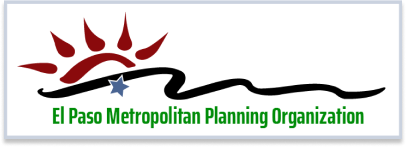| Functional Object |
Description |
User Defined |
| Field Secure Area Sensor Monitoring |
'Field Secure Area Sensor Monitoring' includes sensors that monitor conditions of secure areas including facilities (e.g. transit yards), transportation infrastructure (e.g. Bridges, tunnels, interchanges, and transit railways or guideways), and public areas (e.g., transit stops, transit stations, rest areas, park and ride lots, modal interchange facilities). A range of acoustic, environmental threat (e.g. Chemical agent, toxic industrial chemical, biological, explosives, and radiological sensors), infrastructure condition and integrity and motion and object sensors are included. |
False |
| Field Secure Area Surveillance |
'Field Secure Area Surveillance' includes video and audio surveillance equipment that monitors conditions of secure areas including facilities (e.g. transit yards), transportation infrastructure (e.g. as bridges, tunnels, interchanges, and transit railways or guideways), and public areas (e.g., transit stops, transit stations, rest areas, park and ride lots, modal interchange facilities). It provides the surveillance information to the Emergency Management Center for possible threat detection. It also provides local processing of the video or audio information, providing processed or analyzed results to the Emergency Management Center. |
False |
| Roadway Basic Surveillance |
'Roadway Basic Surveillance' monitors traffic conditions using fixed equipment such as loop detectors and CCTV cameras. |
False |
| Roadway Field Management Station Operation |
'Roadway Field Management Station Operation' supports direct communications between field management stations and the local field equipment under their control. |
False |
| Roadway Incident Detection |
'Roadway Incident Detection' provides incident detection using traffic detectors and surveillance equipment. It monitors for unusual traffic conditions that may indicate an incident or processes surveillance images, watching for potential incidents. It provides potential incident information as well as traffic flow and images to the center for processing and presentation to traffic operations personnel. |
False |
| Roadway Passive Monitoring |
'Roadway Passive Monitoring' monitors passing vehicles for a signature that can be used to recognize the same vehicle at different points in the network and measure travel times. Depending on the implementation and the penetration rate of the technology that is monitored, other point traffic measures may also be inferred by monitoring the number of vehicles within range over time. Today this approach is implemented most commonly using a Bluetooth receiver that passively monitors Bluetooth devices on–board passing vehicles and license plate readers that record the vehicle license plate number, but any widely deployed vehicle communications technology or feature that can be passively monitored to uniquely identify a vehicle could be used. |
False |
| Roadway Signal Control |
'Roadway Signal Control' includes the field elements that monitor and control signalized intersections. It includes the traffic signal controllers, detectors, conflict monitors, signal heads, and other ancillary equipment that supports traffic signal control. It also includes field masters, and equipment that supports communications with a central monitoring and/or control system, as applicable. The communications link supports upload and download of signal timings and other parameters and reporting of current intersection status. It represents the field equipment used in all levels of traffic signal control from basic actuated systems that operate on fixed timing plans through adaptive systems. It also supports all signalized intersection configurations, including those that accommodate pedestrians. In advanced, future implementations, environmental data may be monitored and used to support dilemma zone processing and other aspects of signal control that are sensitive to local environmental conditions. |
False |
| Roadway Signal Preemption |
'Roadway Signal Preemption' includes the field elements that receive signal preemption requests from emergency vehicles approaching a signalized intersection and overrides the current operation of the traffic signals to stop conflicting traffic and grant right–of–way to the approaching vehicle. |
False |
| Roadway Standard Rail Crossing |
'Roadway Standard Rail Crossing' manages highway traffic at highway–rail intersections (HRIs) where operational requirements do not dictate advanced features (e.g., where rail operational speeds are less than 80 miles per hour). Either passive (e.g., the crossbuck sign) or active warning systems (e.g., flashing lights and gates) are supported depending on the specific requirements for each intersection. These traditional HRI warning systems may also be augmented with other standard traffic management devices. The warning systems are activated on notification of an approaching train by interfaced wayside equipment. The equipment at the HRI may also be interconnected with adjacent signalized intersections so that local control can be adapted to highway–rail intersection activities. Health monitoring of the HRI equipment and interfaces is performed; detected abnormalities are reported through interfaces to the wayside interface equipment and the Traffic Management Center. |
False |
| Roadway Traffic Information Dissemination |
'Roadway Traffic Information Dissemination' includes field elements that provide information to drivers, including dynamic message signs and highway advisory radios. |
False |
| Roadway Work Zone Safety |
'Roadway Work Zone Safety' includes field elements that detect vehicle intrusions in work zones and warns crew workers and drivers of imminent encroachment. Crew movements are also monitored so that the crew can be warned of movement beyond the designated safe zone. |
False |
| Roadway Work Zone Traffic Control |
'Roadway Work Zone Traffic Control' controls traffic in areas of the roadway where maintenance and construction activities are underway, monitoring and controlling traffic using field equipment such as CCTV cameras, dynamic messages signs, and gates/barriers. Work zone speeds and delays are provided to the motorist prior to the work zones. |
False |
